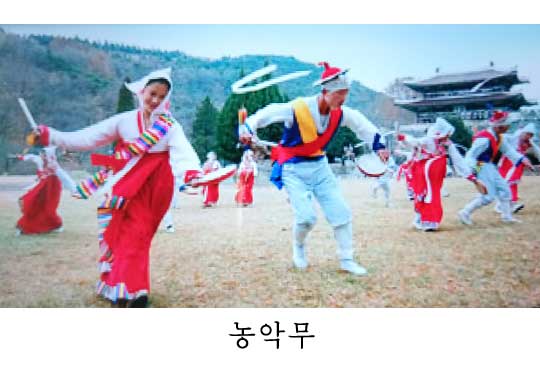Peasant Dance
As a folk dance performed by the peasants to their music from olden times, it is popular among farmers, which show their optimism and cheerfulness.
It is characterized by its brisk, ambitious and gallant attire.
The dancer wears a red magoja (Korean jacket worn over upper garment) with yellow, white and black-coloured cuffs of sleeves and ties the waistband up on the chest and hangs three silk streamers of assorted colours on the back.
When dancing, especially running or turning, the streamers blow in the wind and spread out to give a beautiful appearance.
The dancer ties a coloured towel on his head and wear a jonrip (Korean hat) attached with a decorative tassel.
Turning round a decorative tassel, unique to the peasant dance, is a talent to turn round a pheasant’s feather or a long white paper strip linked to the knob of jonrip like a pinwheel.
Moving around the field drawing various shapes with 12 fathoms-long decorative tassels by the dancers is a spectacular sight of this folk art.
Peasant dance is still widely performed on various occasions in the farms such as the days of year-end account settlement and income distribution, moving into a new house and national celebrations.
